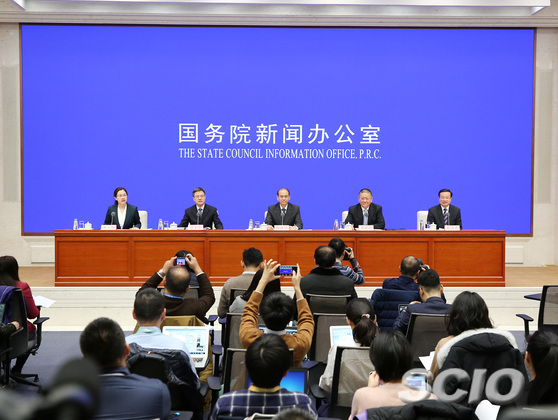Census: Big high-tech industries, R&D spending grow rapidly from 2013 to 2018
China's large, high-tech manufacturing companies and its research and development expenditures increased rapidly from 2013 to 2018, laying solid groundwork for the country's pursuit of high-quality development, the fourth national economic census showed on Wednesday.
China's large, high-tech manufacturing companies and its research and development expenditures increased rapidly from 2013 to 2018, laying solid groundwork for the country's pursuit of high-quality development, the fourth national economic census showed on Wednesday.

The number of industrial enterprises and related entities reached 66,214 by the end of 2018, accounting for 17.7% of all such enterprises and entities, the National Bureau of Statistics said.
There were 33,573 large, high-tech manufacturing companies by the end of 2018, up 24.8% from the end of 2013, according to the NBS.
The R&D expenditures of large, high-tech manufacturing companies came in at 355.91 billion yuan (US$50.7 billion) in 2018, up 75% from 2013.
Large, high-tech manufacturing companies means those with annual revenue of 20 million yuan or more generated by their main business operations.
China has attached great importance to the development of high-tech industries in recent years, considering it the way to upgrade the overall economic structure and improve its economic quality.
In the latest call for pursuing high-quality development, the Fourth Plenary Session of the 19th Communist Party of China Central Committee, convened Oct. 28 to 31, stressed the importance of modernization of industrial chains and applying science and technology to upgrading the country's manufacturing sectors.
Analysts said results of the latest economic census showed that China has made progress in high-tech industry development.
"Based on the NBS data, in the 2013-18 period, China's emerging strategic and high-tech industries made significant progress and its R&D input growth in those industries was at a high level, which is commendable," said Su Jian, an economist at Peking University's School of Economics.
China's ratio of R&D expenditures to business revenues was 2.27% during that period, which is quite high but still lower than many other major economies, he said in an interview. "It means there's still much room for China to further increase its R&D expenditures."
But the NBS data failed to indicate the output that R&D had led to, he said.
The economic census, one of China's major censuses of national conditions, conducted every five years, investigates the development of the country's industrial and service sectors to have a more detailed picture of the country's economic development.
China has implemented three national economic censuses so far, conducted in 2004, 2008 and 2013.
The NBS said in a statement that the fourth national economic census has helped "comprehensively grasp the landscape" of the manufacturing and service industries "and systemically reflected China's economic and social development".
"It is like a high-quality 'physical checkup' for the national economy, providing extremely valuable and large amounts of statistics," it said.

